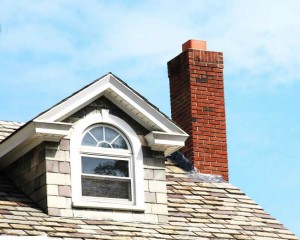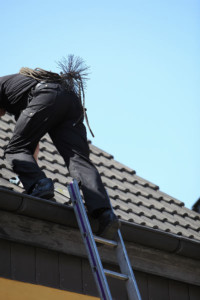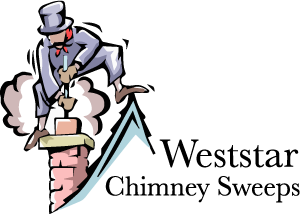by Mike O'Mara | Apr 29, 2015 | Chimney Maintenance
Can you identify the major components of your masonry chimney? If you cannot, you are not alone. Many homeowners have very little knowledge about their fireplace and chimney systems. When you do not know the names of certain parts or what exactly each part is supposed to do, it can be difficult to describe a chimney problem you could be experiencing. Knowing the details of each component of the anatomy of your chimney can help you discuss your issue with chimney professionals, like our staff at Weststar Chimney Sweeps. As part of our responsibilities as Chimney Safety Institute of America (CSIA)-certified chimney sweeps, educating our customers about the major parts of their fireplace and chimney systems is one of our top priorities. We would like to explain each component of the anatomy of a masonry chimney to help you be able to identify these parts and their specific functions.

As identified by the CSIA, the anatomy of a masonry fireplace and chimney system consists of the following parts:
- Mortar Crown – Also commonly known as a chimney crown, this component is located on top of the chimney to prevent water penetration of the bricks and mortar as well as to stop water leaking down the flue and into your home.
- Flue – Found in different shapes and sizes, the flue is the chamber that vents out the corrosive byproducts of combustion from the fireplace. A single chimney can have multiple flues if several fireplaces or stoves are connected to the same chimney. Your flue should always be clear from blockages to allow proper airflow.
- Smoke Chamber – Located above the firebox and below the flue, the smoke chamber allows smoke to mix and rise up the flue. Commonly constructed from terracotta tiles, this part is also known as the chimney throat.
- Smoke Shelf – Functioning with the smoke chamber to push smoke out the flue, the smoke shelf can be found behind the damper and is at the bottom of the chimney.
- Damper – Typically located in the same area as the smoke chamber and smoke shelf, the damper seals your chimney closed when the fireplace is not in use. A very important part of the efficiency of your chimney, the damper needs to function properly to keep heated air from escaping out the chimney when there is no fire.
- Lintel – The heavy piece of angle iron that holds up the bricks over the center of the fireplace, the lintel can be found embedded into the brick.
- Firebox – A crucial part of your fireplace and chimney system, the firebox is a two- or three-walled structure that contains the direct heat of the fire and guides the smoke into the smoke chamber. As the firebox is exposed to such high temperatures, this component tends to deteriorate faster than other parts of the anatomy of your chimney. It is crucial that the firebox is constructed with the right materials and kept in good repair.
- Ash Dump – Located right below the center of the firebox, the ash dump is equipped with a door. When the ash dump door is open, ashes from the fire fall into the ash dump. This component allows for simple ash removal from the firebox.
If you have any questions about any of these parts, get in touch with Weststar Chimney Sweeps. We are happy to tell you more about the anatomy of your masonry chimney.
by Mike O'Mara | Jul 9, 2014 | Chimney Maintenance
Prevention is The Cure: Top 3 Chimney Repairs
It’s tough to manage and organize your own home. You have a handful of big and important decisions to make, plus a seemingly never-ending to-do list. You are not only concerned about the well-being and functionality of every aspect of your home, but you also need to think about the safety and security of you and your family.
This sentiment is doubled when homeowners have chimneys in their home. Based on our years of experience here at Weststar Chimney Sweeps, we know what you need to do to optimize performance and safety.

Over the course of your home’s life, your chimney will likely need repair. Here are three of the most common.
To help you further, here are the top 3 parts of the chimney that are usually subjected to repair:
As its name suggests, the chimney crown is located at the top most portion of the chimney. The chimney crown’s main function is that it covers the chimney to prevent moisture from filtering down in the stone or brick walls. Basically, it protects the mortar, which in turn holds everything in place. This part of the chimney is constantly subjected to drastic changes in weather and temperature so with time, the chimney crown may have cracks and leaks that may cause varying degrees of problems.
According to the Chimney Safety Institute of America a chimney liner is a; “clay, ceramic or metal conduit intended to contain the combustion products and direct them to the outside atmosphere”. So basically, your chimney liner not only protects you, your family and your home from the harmful products of combustion and burning, it also protects your chimney and allows it to last longer.
Flashing is done to ensure that your chimney is waterproof and safe. Flashing is basically a sheet of metal which consists of two panel parts. These are installed to make sure that the area where the chimney meets the roof of your home is watertight and safe.
To know your chimney and to avoid huge damages, you need to understand how each part of your chimney works. You need to have an idea what each part is for to see their importance. Once you get to grasp that, you’d be more careful and mindful of your chimney as a whole.
by Mike O'Mara | Mar 25, 2014 | Chimney Maintenance
Spring: A Fresh Start for Your Chimney
You’ve done an excellent job in taking good care of your chimney during winter, but no matter how cautious you’ve been, there might still be things that happen inside the chimney that are just beyond your control. Winter might have left some damages behind that need to be inspected and fixed and have to be attended to right away. Our Chimney Safety Institute of America (CSIA) certified chimney sweeps from Weststar Chimney Sweeps would like to put your mind at ease.

Chimney cleanings and inspections are not DIY projects. Let the certified professionals put your fears to rest.
Parts & Systems
There are certain parts of the chimney which are vital in directing the smoke out the right way; parts like the:
- Flue
- Flue liner
- Damper
- Smoke Chamber
These parts help create draft inside the chimney. However, these are also the parts that are most prone to creosote buildup or other obstructions making it harder for smoke to go out. This opens doors to a lot of problems that will not only cost thousands in repairs, but may even cost you something more valuable—your health or even your life.
What to do
To prevent objects from entering the chimney, it’s best to have a chimney cap installed so that the inside of your chimney is protected from all the dangers that the outside world can bring. Some examples are animals, debris, spider webs and leaves.
Then there is water. This is one of the things chimneys hate the most because it destroys it—the performance and the structure. It can cause the brick walls to deteriorate. This problem can be prevented by waterproofing the chimney and repairing the flashing. We also make it a point to include the chimney crown in the inspection and repairs because when it is cracked, this can also be another entry point for water. These measures will help prolong the life of your chimney.
Even if you don’t use your chimney during spring, it’s best to keep animals and water out. Remember, it’s not just to prepare for the next winter season, we want to make sure that your chimney continues to be efficient for many years to come. Let us help keep your heating system in tip-top shape.



